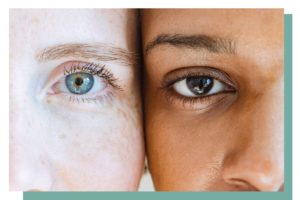
Embracing Change: Rise Like a Phoenix with Neurocoaching
Stress is that feeling of emotional or physical tension that hits us when we’re facing difficult situations.

Stress is that feeling of emotional or physical tension that hits us when we’re facing difficult situations.

Stress is that feeling of emotional or physical tension that hits us when we’re facing difficult situations.

I wanted to share one of the most impactful ways I’ve used and supported 100s of women to implement to maintain positive mental health – setting and maintaining healthy boundaries.

Our brains are amazing and complex organs that are responsible for regulating our emotions and survival instincts. One key player in this intricate system is the amygdala.

Have You Ever Written Yourself a Letter? Have you ever written yourself a letter? I recently had the unique experience of reading a letter that I had written to myself a year ago. I had tucked it away between the pages of my favourite book, almost forgetting about it, until I got a reminder in my calendar. I went to the bookshelf pulled the book down and there it was addressed to Mrs Melanie Greenhalgh in my own handwriting. Little did I know, this simple exercise would reveal so much about where I was back then and give me a profound chance to reflect on where I am today. As I carefully opened the envelope, memories from a year ago came flooding back. The person I was, the challenges I faced, the dreams I nurtured—all captured in my own words. Reading through the letter, it was like having a heart-to-heart conversation with my past self, and it was nothing short of enlightening. In those lines, I found a mix of emotions: hopes, fears, triumphs, and setbacks. It was a snapshot of my life during a particular moment in time, and it held a mirror to my soul. The letter detailed my aspirations, the goals I was determined to achieve, and the hurdles I was struggling to overcome. It was an honest dialogue that highlighted not only my ambitions but also the roadblocks that were holding me back. While it might be easy to think that writing a letter to ourselves is a bit ‘out there’, Behavioural Neuroscience provides fascinating insights into why reflecting on progress is essential for our development: 1. Neuroplasticity: Reflection helps to reinforce neural pathways associated with learning and development. Neuroplasticity, the brain’s ability to reorganise itself by forming new neural connections, is enhanced when we engage in self-reflection. This rewiring of the brain can result in improved problem-solving skills and greater adaptability. 2. Memory Consolidation: Reflecting on experiences helps to consolidate memories, making them more stable and accessible in the future. This process occurs during periods of rest or low activity, allowing the brain to sift through information and retain what is most valuable. 3. Emotional Regulation: Self-reflection activates the prefrontal cortex, a region of the brain involved in planning, decision-making, and moderating social behaviour. This activation helps you better understand and manage your emotions, leading to improved emotional regulation—a key aspect of mental health and wellbeing. 4. Self-Awareness: The act of reflecting fosters self-awareness by engaging the medial prefrontal cortex. Self-awareness is crucial for recognising personal strengths and weaknesses, setting realistic goals, and making informed decisions. 5. Learning from Mistakes: Reflection enables us to learn from our mistakes. When you reflect on setbacks or failures, the brain analyses these events, helping you to avoid similar pitfalls in the future. This learning process is crucial for personal growth and resilience. Remember, you don’t ever have to do this alone. You can connect with a coach to help debrief, organise and understand your thoughts, feelings and actions. 6. Motivation and Reward System: Reflecting on progress activates the brain’s reward system, releasing dopamine—a neurotransmitter associated with pleasure and motivation. This positive reinforcement encourages continued effort and perseverance, making it more likely you will pursue and achieve their goals. Sometimes, in the hustle and bustle of daily life, it’s easy to overlook our own progress. The simple act of writing a letter to yourself can remind you of the milestones you’ve achieved, the growth you have experienced, and the resilience you’ve developed. A letter to yourself is a beautiful way to document your perseverance and celebrate your journey, no matter how winding it has been. Equally important, the insights of a letter can serve as a gentle nudge to re-evaluate the obstacles you face. It can shed light on the patterns and habits that are hindering your progress, and give you clarity on what needs to shift, change or adapt. The process of self-reflection is both humbling and empowering, offering you a fresh perspective on your life. Writing a letter to oneself is an incredibly powerful tool for personal growth. It’s a practice that encourages introspection, self-compassion, and accountability. And the best part? It doesn’t have to end with just one letter. Making it a habit to write to yourself at regular intervals can provide ongoing insights and motivations. And if you want someone to support you through this type of process – I’m here to help by holding a safe space to guide you and let you freely explore your insights without judgement, blame, shame or guilt. So, have you ever written yourself a letter? If not, I encourage you to give it a try. Set aside some quiet time, and let your thoughts flow. Write about where you are, where you want to go, and what’s standing in your way. Seal the letter, mark the date, and pledge to open it in the future—maybe in a year, maybe in five. When the day comes, you might be surprised by the wisdom it holds and the progress it reveals. Ready to book in a 20 minute Connection Call with Mel? Do it now by clicking here. Go gently Mel xx

Breaking Free from People Pleasing: 3 Tips for Creating Safe Boundaries Do you often find yourself saying yes when you really want to say no? Do you constantly put others’ needs before your own, leaving you feeling drained and exhausted? If so, you might be caught in the trap of people-pleasing. While it’s natural to want to be kind and accommodating, constantly prioritising others’ needs over your own can have a detrimental impact on your wellbeing. People-pleasing can hold us back and drain us of energy, however there are ways to gently shift this pattern and create safe boundaries. It’s important to understand the consequences of people pleasing, because while it may seem like a noble trait, it often comes with a high personal cost. By feeling like we constantly need to seek the approval of others and avoiding conflict, we compromise our own desires, values, and boundaries. The outcome can be increased stress, anxiety, and a loss of our identity. It’s essential to recognise the toll people-pleasing takes on our emotional and mental wellbeing. Here’s 3 top tips to help you create safe boundaries……… Tip 1 – Reflect and Identify Your Triggers The first step in breaking free from people-pleasing is self-reflection. Take some time to identify the situations, people, or circumstances that trigger your people-pleasing tendencies. By understanding what prompts these behaviours, you can start building awareness and take proactive steps to change them. It’s important to remember that setting boundaries is not selfish; it’s an act of self-care and self-respect. Tip 2 – Practice Assertive Communication Developing assertive communication skills is crucial for creating safe boundaries. Start by expressing your needs and desires clearly and directly, without fear of judgment or rejection. Remember, you have the right to say no and prioritise your own well-being. Learning to communicate your boundaries effectively will not only empower you but also foster healthier and more authentic relationships. Tip 3 – Prioritise Self-Care and Set Realistic Expectations One of the main drivers of people-pleasing is the desire to meet unrealistic expectations. It’s essential to recognise that you cannot please everyone, nor should you try. Instead, focus on taking care of yourself and setting realistic expectations for what you can and cannot do. Prioritise self-care, make time for activities that bring you joy and fulfilment, and remember that your well-being is just as important as anyone else’s. Breaking free from the patterns of people-pleasing is a transformative journey towards self-discovery and self-empowerment. By recognising the consequences of people pleasing, reflecting on your triggers, practicing assertive communication, and prioritising self-care, you can create safe boundaries and reclaim your energy and personal power. Embrace the process with compassion and know that you are deserving of a life that is authentically yours. Need help establishing boundaries, communicating assertively and shifting your relationship with people pleasing? Reach in and we can talk about the options available. You can book a call in my calendar or email me directly on workwith@collectivewisdomcoaching.com. Go gentlyMel xox

Moving Through Emotional Barriers: Understanding and Overcoming Emotional Resistance Have you ever paid attention to ‘that’ feeling that comes up any time you’re doing something new in your life, career, or business? It’s not excitement, it’s not contentment. It can feel like a heavy negative weight. It could be emotional resistance. Emotional resistance refers to the subconscious or conscious defence mechanisms that we use to protect ourselves from experiencing difficult emotions or situations. Emotional resistance can manifest in a variety of ways, such as denying or avoiding feelings, pushing away people or situations that trigger uncomfortable emotions, or distracting oneself from feelings through various coping mechanisms. When we think about it logically, we can see that it is an inevitable part of the human experience, and we can expect to encounter it across our lifetime. Sometimes we are so used to the resistance being part of our reactions that they become automatic – a little like being on autopilot. So, what might emotional resistance look like for you? It can manifest in a variety of ways, but for a lot of women, it might show up as………. Getting distracted or letting other things become “bigger priorities” without any real reasoning. Overcomplicating what we ‘have to do’ as a way to slow yourself down and therefore ‘put off’ success or failure. Asking your friends and family what they think you should do rather than trusting yourself and your own intuition. Thinking that you know it all or feeling like you’ve tried it all and so there’s no point trying again. Not setting aside the time to do ‘the work’ you need to, to move towards your goals. Quitting at the first sign of trouble or when the results aren’t instant, because “if it hasn’t worked by now, it probably won’t.” Comparing yourself to others and feeling despair because you ‘should’ have done more with your life by now! Judging yourself for how difficult things are and then going into cycles of shame, blame and guilt that prevent you from doing what you really want to do. Not doing anything until everything is perfect. We can find that our emotional resistance is a response to loss, trauma, or past difficult life experiences. Our brain uses resistance to keep us safe by helping us to regulate our emotions and to manage the intensity of our feelings. Whilst this can protect us from making decisions that could be harmful, it can also stop us from developing and growing as humans. You’ll know when resistance makes an appearance because ultimately you end up not doing the things you really want and need to do in order to create the results you aspire to. It’s important to be aware of emotional resistance and make sure you are checking and challenging where it is coming from and what it is trying to do. Using these simple but effective strategies can help you overcome resistance and ease the impacts it may be having. Acknowledge and Find the Source of Your Feelings A useful first step is to recognise and name the emotions you are experiencing. Allow yourself to feel them without judgement or criticism. This may be difficult, but it is essential for moving forward. Ask yourself: What am I feeling? Why am I feeling this way? What is causing me to be resistant? Talk It Out Talking out your feelings can often be helpful. Talk to someone you trust and feel comfortable with, such as a friend or family member, a coach or therapist. Using others as a sounding board can help you gain insights and develop strategies to move past your resistance. Practice Self-Compassion Self-compassion is simply treating yourself with kindness, understanding, and acceptance during times of difficulty, or failure. It’s about knowing that you are human, and you will feel fear and resistance and then responding by nurturing and supporting yourself. Understanding and acknowledging our emotional resistance may seem challenging and exhausting, yet it is essential for paving the way towards personal growth and success by exploring alternative and healthier ways to navigate through obstacles and setbacks effectively. Only through recognising the root of our feelings and addressing our emotional barriers can we truly embrace growth and achieve our unique definition of success. Need help or want to explore your resistance? Reach in and we can talk about the options available. You can email me directly on workwith@collectivewisdomcoaching.com or book a call in my calendar. Go gently Mel xoxo

Unpacking the Power of ‘Should’ to Cultivate a Compassionate Connection with Your Authentic Self There isn’t a woman in the world that doesn’t have a relationship with the word ‘should’. It weaves its way into the fabric of expectations, societal norms, and self-imposed pressures. This seemingly innocuous word carries a weight that can influence our thoughts, feelings, and actions, shaping our experiences of authenticity. The Weight of ShouldThe word ‘should’ often acts as a silent dictator, imposing a set of expectations that may not align with our true selves. Whether it’s societal expectations, family pressures, or self-imposed standards, the burden of ‘should’ can lead to feelings of inadequacy, self-doubt, and a constant quest for external validation. As women, we may find ourselves navigating a tangled mess of ‘shoulds,’ from career choices and body image to relationships and motherhood. ‘The ‘shoulds’ in life are like invisible chains, constraining our authenticity and limiting our ability to embrace who we truly are.’ – Anonymous Impact on AuthenticityThe pervasive influence of ‘should’ can significantly impact our authenticity. The constant comparison to external standards may lead to a disconnection from our true selves, as we strive to fit into moulds created by societal expectations. Authenticity requires the courage to embrace our uniqueness, but the weight of ‘should’ often hinders this journey. Reclaiming AuthenticityRedirecting the impact of ‘should’ involves a deliberate and conscious effort to reclaim our authenticity. This journey begins with self-awareness and a commitment to understanding the roots of our ‘should’ narratives. By identifying the sources of these expectations, we gain clarity on whether they align with our values, purpose and desires. Cultivating a Caring MindsetCreating a more caring relationship with ourselves involves cultivating a mindset that is rooted in self-compassion. Instead of harshly judging ourselves based on ‘shoulds,’ we can choose to approach our thoughts and actions with kindness. Recognising that perfection is an unrealistic standard allows us to embrace our imperfections as part of our unique journey. Embracing Calm Through MindfulnessThe practice of mindfulness can be a powerful tool in redirecting the impact of ‘should.’ By bringing our attention to the present moment, we can observe our thoughts without judgment and create space for self-reflection. Mindfulness allows us to detach from the expectations of the past or future, fostering a sense of calm acceptance of the present. Fostering Compassion in ActionCompassion is not only a mindset but also a call to action. Redirecting the impact of ‘should’ involves making choices that align with our authentic selves. This may include setting boundaries, saying no when necessary, and prioritising self-care. As we embrace self-compassion in our actions, we create a ripple effect that extends to our relationships and communities. Gently remind yourself that whilst the word ‘should’ may persist as a lingering note, it doesn’t have to dictate how we think and feel about ourselves. By recognising its impact and consciously redirecting our thoughts, feelings, and actions, we can cultivate a more caring, calm, and compassionate relationship with ourselves. It’s time to invest in defining and creating authenticity within ourselves and support each other as we dismantle the ‘shoulds’ that hinder the beautiful expression of who we truly are. Go gentlyMel

The Two Questions That Can Change Your Mind: Challenging Automatic Negative Thoughts Scroll through social media and you’ll see positivity mantras and a focus on mindset. But amongst all the noise, we can find ourselves feeling like failures because we hear negative self-talk every day. Our minds generate around 70,000 thoughts a day, and shockingly, 80% or more tend to be negative. When you really sit with that – it helps you make sense of it and understand that part of creating and maintaining our well-being is managing the prevalence of the negative thoughts our brain generates to help keep us safe and alive at all times! Automatic Negative Thoughts trigger a cascade of chemicals in our bodies, affecting our mood and overall health. The power of our thoughts lies in their ability to shape our reality, regardless of their accuracy. Thoughts, if left unquestioned, can deceive us and lead to anxiety, depression, and relationship issues. However, by learning to identify and challenge these automatic negative thoughts, we can transform our mental landscape and cultivate a more positive outlook on life. Managing negative thoughts is a skill that can be learned and practiced, leading to significant improvements in our mental and emotional well-being. Here are five simple steps to help you navigate and overcome automatic negative thoughts: Write Down Your Automatic Negative Thoughts: Start by acknowledging and recording your negative thoughts. Bringing them out into the open is the first step towards challenging them. Identify the Type of Automatic Negative Thought: Recognise common patterns such as: ‘All Or Nothing’ Thinking:Seeing things in extreme terms, such as believing that something must be perfect or a total failure. Labelling:Using negative names or terms to describe yourself or others, often oversimplifying complex situations. The Blame Game:Avoiding personal responsibility by attributing negative outcomes solely to external factors or other people’s actions. Thinking With Your Feelings:Allowing emotions to dictate your thoughts, leading to irrational beliefs based on current emotional states. Fortune-Telling:Predicting negative outcomes or events without evidence, assuming the worst-case scenario will always happen. Mind-Reading:Assuming you know others’ thoughts, intentions, or motivations, often attributing negative reasons to their behaviours without factual basis. Understanding these patterns can help you address and reframe them effectively. Question the Truth of Your Thoughts: Challenge the validity of your negative thoughts by asking yourself if they are 100% true. Often, our minds exaggerate situations or distort reality, leading to unnecessary stress and anxiety. Assess Your Emotional Response: Reflect on how your negative thoughts make you feel and then imagine how you would feel without them. This exercise can provide perspective on the impact of your thoughts on your emotions. Make Negative Thought Management a Daily Habit: Consistency is key when it comes to managing negative thinking. Practice challenging and reframing your thoughts regularly to strengthen your cognitive resilience and promote a positive mindset. While there is immense pressure on individuals, especially women, to excel in various aspects of life, embracing self-compassion is crucial for maintaining mental well-being and resilience. By defining our own version of success and integrating self-compassion and gratitude into our daily lives, we can shield ourselves from the harmful effects of constant comparison and perfectionism. There are two questions I encourage you all to use to neutralise automatic negative thoughts: Are my thoughts useful? How do they behave? By adopting a proactive approach to managing our thoughts and cultivating self-compassion, we can unlock a sense of inner peace, confidence, and emotional empowerment. Remember, your thoughts do not define you; they are simply visitors in your mind, and you have the power to choose the ones that serve your highest good. Go gently Mel xx

From Triggers to Glimmers: A Journey of Conscious Awareness There’s no doubt that you’ve heard the word ‘trigger’. Perhaps someone has told you that they have felt triggered. Perhaps you have felt triggered. The word has definitely infiltrated our everyday language and experiences. Do you know the true definition of a trigger? In mental health terms, a trigger refers to something that affects your emotional state, often significantly, by causing extreme overwhelm or distress. It is often referred to as a ‘sensory reminder that causes painful memories or certain symptoms to resurface.’ Triggers are the secret threads that weave through the fabric of our emotions, often unnoticed but deeply impactful when they hit. If you’ve ever experienced a traumatic event, you’ll likely remember certain sounds, smells, or sights related to that experience. One of the most common impacts of a trigger is how it affects our ability to remain present in the moment, many people report how triggers will pull them away from themselves and all around them, distancing them from reality. It can also bring up and engage with specific patterns of thinking and feeling that influence our behaviours and actions. In other words triggers can be a LOT! Understanding Triggers: Delving into the Subtleties Picture the sudden appearance of a barking dog—a clear and unmistakable trigger of potential danger. Whilst that is obvious and easy to understand, more often than not, triggers manifest as subtle or even unconscious cues that set off our nervous system’s alarm bells. These cues can be found in the nuances of facial expressions, tones, vocal pacing, and body language. They can also be found in places, spaces, our own behaviours and the actions of others or things. An example for me is the hospice where my Mum spent time for pain management and eventually her death. Whilst I was very appreciative for the care we received and in particular that I was able to shift from the role of carer to a being a daughter again – the reality is that there are many sensory reminders that cause painful memories to resurface. For a long time, all the roads (the actual bitumen roads) that lead to the hospice were a trigger for me to feel the pain, the loss, the anger, the resentment and all the other feelings I was feeling at the time. Recognising that emotional triggers extend far beyond the obvious and are another aspect of what shapes our reactions and responses to the world around us. Within our interpersonal relationships, we’re incredibly sensitive to triggers. As humans we can experience a range of micro triggers such as a shift in someone’s gase or as nuanced as a change in vocal inflection. These subtle triggers elicit reactions that can range from sudden anger to the urge to withdraw. Understanding how these triggers impact us can be the first step for women to begin reclaiming their emotional agency. Unique Pathways: Triggers Personalised by Experience What makes emotional triggers so captivating is their unique personalisation. No two triggers are exactly alike, as each person’s lifetime of experiences shapes their own emotional landscape. A particular smell might awaken an unconscious memory of childhood trauma for one individual, while another might experience a stronger trigger in response to feelings of exclusion due to their history of rejection. These triggers hold the power to shift our emotional tides in ways that can go unnoticed by our conscious minds. Recognising the intricate journey that we are on is critical to be able to understand how we can manage our triggers in life. These days I can travel on all the roads that lead towards the hospice and for the most part I am ok. But truth be told some days, usually the days when in some way I need my Mum, I can experience a triggering moment. I manage it very differently now than I did closer to the event and whilst I’d like to say to you that they subside and stop causing us pain – I’d be lying. What I can recognise now that I couldn’t then was the growth I have experienced and how I can hold myself safe when I experience pain from the past. Glimmers: The Soft Embrace of Safety Glimmers are the absolute opposite of triggers in that they are small moments that spark opposite emotions to triggers such as joy, peace and safety. Glimmers serve as beacons of safety and connection. Glimmers are the cues that open the doors to relaxation and authenticity, inviting us to engage with the world from a place of trust. Just as a ray of sunlight breaking through the clouds brings warmth after a storm, glimmers bring a sense of ease after the emotional storms of triggers. They activate our ventral vagal nervous system, offering moments of connection with ourselves, others, and the world. For the longest time, I was stuck in the goofy loop of triggering. Discovering, researching, understanding, and embracing glimmers became a large part of reclaiming my sense of self. Glimmers are everywhere, waiting to be noticed and cherished. The caress of a gentle breeze, the fragrance of a home-cooked meal, an eye stare from your dog or the beauty of leaf growing slowly in the sun — all of these hold the potential to elicit feelings of comfort and well-being. While triggers can make us feel that we have lost a bit of control, a glimmer can remind us that not being in control is not necessarily a bad thing all the time. You may not recognise what your personal glimmers are. It can be really useful to try and remind yourself of times when you felt calm, relaxed and what happened at that time or where you were when you had those feelings so you can revisit them. By tuning in to the glimmers around us—whether they’re found in the natural world, our surroundings, or within ourselves—we can gradually become less reactive to triggers and more responsive to life’s

Unveiling Your Potential: The Power of Self-Awareness There’s no doubt that life is fast! Life is intense. Life is complex. Life is messy and that striving to be the best version of ourselves while juggling responsibilities can feel overwhelming. If you check in with yourself….do you aspire to experience more joy, influence change, make better decisions, and lead yourself or others with confidence? The key lies in cultivating the powerful skill of self-awareness. Do you want the ability to navigate life’s challenges and opportunities while maintaining a clear understanding of who you are and the impact you have on the world around you? Don’t we all. Well you can! What is Self-Awareness? At its core, self-awareness is the conscious knowledge of your character, emotions, motives, and desires. It’s the skill of focusing on your thoughts, actions, and emotions and evaluating them in relation to your internal standards. Psychologists Shelley Duval and Robert Wicklund define self-awareness as the ability to manage emotions, align behaviour with values, and accurately understand how others perceive you. Simply put, self-awareness empowers you to interpret your actions, feelings, and thoughts objectively, without being driven solely by emotions. This skill is crucial because it enables you to assess your personal growth and make shifts and changes that serve you. Two Facets of Self-Awareness: Public and Private There are two distinct forms of self-awareness: public and private. Public self-awareness involves being conscious of how you appear to others, which can guide you to stick to the social norms. However, when we get stuck on this, we can become self-consciousness and worry excessively about others’ opinions. On the other hand, private self-awareness involves introspection and a deep understanding of your internal state, enabling you to approach feelings and reactions with curiosity rather than judgment. In hyper-drive we can go into rumination and get stuck in our own goofy loop! Anyone else been there, sucked that lemon? Hands up! I have. The Importance of Self-Awareness Extensive research shows that self-aware individuals experience greater levels of happiness, improved relationships, and enhanced personal and social control. The real benefit of awareness is that we can empathise with different perspectives, make decisions, and build stronger connections with others. Women who understand how they’re perceived are more likely to be inclusive, empowering, and effective in pursuing their dreams, goals, ambitions, and definition of success in life. Strengthening self-awareness liberates you from the scripts, biases and assumptions that impact us daily, enabling you to view situations from multiple angles and make informed decisions that are in your best interest. Here are some examples of common benefits of self-awareness: It gives us the power to influence outcomes. It helps us to become better decision-makers It gives us more self-confidence — so, as a result, we communicate with clarity and intention. It allows us to understand things from multiple perspectives. It frees us from our assumptions and biases. It helps us build better relationships. It gives us a greater ability to regulate our emotions. It decreases stress. It makes us happier. The Self-Awareness Gap Although self-awareness is talked about a lot, only a small percentage of individuals truly possess it. This gap is created from the messages within society that encourage us to suppress emotions, leading to internalised resentment or externalised blame. Lacking self-awareness can create an obstacle to your own personal development, hindering empathy and fostering self-absorption. Many of the women I work with ask me “What can I do to get to know myself again?” Like most of the responses I give to so many of the questions I’m asked, I tell women all the time – it’s about the process more than the outcome. To help you I put together 6 easy to do, simple strategies you can use to cultivate and recapture your own self-awareness: Envision Your Ideal Self:Visualise the best version of yourself, harnessing your strengths to overcome setbacks and distractions. Make note of her and tune in to what she is showing you. Ask the Right Questions:Focus on “what” questions instead of “why” questions to objectively analyse situations and behaviours, leading to better choices. Strengthen Your Brain:Recognise negative emotions in the moment by catching them, checking them for evidence of truth and challenging their meaning and impact. This is you actively rewiring your brain for better decision-making. Seek Feedback:Request feedback from others about your behaviour, helping you identify blind spots and areas for growth. Keep a Journal:Journaling provides insight into your internal and external experiences, helping you identify patterns that impact your self-awareness. Remember journaling doesn’t have to be formal, it can be a drawing, dot points or notes about your feelings and reflections. Practice Mindfulness:Engage in mindfulness activities such as deep breathing, naming surroundings, organising your space, or creative expression to cultivate self-control and awareness. As you embark on the journey of self-awareness, remember that it’s a continuous process, not a destination. Remember you don’t have to do it all alone. Embracing the path to becoming the best version of yourself doesn’t have to done solo, in fact while it is always a delicious journey of courage and curiosity, bringing in a fresh set of eyes to support, guide and encourage you along the way can be extremely helpful. Take some small pockets of time to apply these strategies and bring attention to the answers they reveal for you. By doing so, you’ll empower yourself to navigate challenges with grace, connect deeply with others, and be able to draw on a sense of unwavering confidence to help you achieve your very own version of success in life. Go gently Mel xx

Feel like an Imposter in Your Own Life Right Now? 3 Facts You Might Need to Read Right Now! Humans are a funny species. If we were to stand back and objectively watch ourselves (think sitting on a bench watching several families of humans interact in an enclosure at Taronga Zoo) we’d witness a lot of love, caring for those closest to us and sharing of our experiences and resources with one another. And if we sat for a little longer and took time to keep watching their interactions, we’d eventually witness the deeper behaviours that sit well below the surface. We see their life choices and decisions being influenced by watching others (think gentle side eye). These humans are looking outside their own pack to see what others are doing, how they are doing it and how successful they appear to be at surviving. We’d witness some healthy competition, because ultimately it is all about survival of the fittest right? We’d see how this comparison and measurement against their peers can cause despair and longing for something different to what they have. And if we stayed on that bench and watched them settle in for the night, we might see some tensions play out. We might see some celebrations of what was achieved that day, personal successes, what was learnt and how good it felt. The other side of that might be stories of some regret from the day’s activities, some friction because although they survived (and that’s the purpose of life, right?), something doesn’t feel right for them. They feel like there must be more to life for them. Some may experience trouble getting to sleep as they think about what they really want. They toss and turn thinking about why the day seems like a success, but it also feels like they failed. As they fall asleep, we see them dream for the future and sometimes, we’ll see their nightmares in full colour. It’s a movie about being a fraud, an imposter in their own life, stuck with no spark or zest for the rest of their life. And if we sit on that bench long enough – we’ll witness those members of the pack rise in the morning, take a hit of caffeine, swallow it and their feelings deep down, and get back onto the treadmill of life because everyone in the enclosure is watching (and there’s another round of visitors at the zoo to entertain). So, what can we learn from these observations? That we are not a homogenous species.Each one of us is different, there are commonalities that bind us. As humans we need to feel connection and belonging, but we also have individual needs and wants that need to be nurtured too. Sure, it’s about survival but we also deserve to be fulfilledWhen we focus on other’s definitions of success and survival we can get left behind. Leaving and ignoring the fulfilment piece behind creates exhaustion regardless of how successful you become. The spark and zest for life is importantWhen we see those who are successful and have that spark in their eye, they have energy to support their existence, balance, and resilience – they’re surviving but, in another gear, they’re thriving. They’re success and fulfillment are aligned. Overall, what our observations lead to is an understanding that we have the right to live our lives in success alignment. That when our success and survival aren’t aligned and leaves us feeling exhausted, stretched, and overwhelmed – we can make change. That we have more control than we think, and we get to exercise it to find what we really want, our purpose, our vitality, our spark. So why do I tell you this story? Because COVID benched us all and we got to observe each other in captivity through Zoom, Facebook, TikTok, Insta, LinkedIn, FaceTime, the news and more. Some of us found out that we are exactly where we need to be, some reassessed, made changes and have emerged more aligned, some realised they want it to be different and are ready to make change, some know they want it to be different but aren’t sure what that means, some are feeling lost and completely stuck in exhaustion and overwhelm. That’s the human experience – it is a continuum of experience but remember nothing is forever. You get to choose what happens next so that you feel fulfilled, energised, excited, ready for a challenge, making your way towards achieving your goals and on the right track for you. You get to be success aligned. If you’re struggling to believe in your ability to understand what you truly want or make a shift and implement some changes – remember you’re not alone. If you need to – just borrow my belief in you, until you’re ready to pick it back up for yourself. I got you – because you’ve got this! Go gently, big loveMel xoxox Do you know about the Wisdom Vault? It’s where I put useful tools, tips and strategy sheets to guide you in your change journey. It’s super simple to access – head over to the resources area of the Collective Wisdom website, sign up and your in – instant access!

Comparison is a natural human tendency. We often find ourselves looking at others and measuring our own worth based on their achievements, appearance, or perceived success. The impact of constantly comparing ourselves to others can be really harmful to our well-being and self-esteem. When we move through life on autopilot, we don’t necessarily notice or engage with when we compare ourselves, how it hurts us, and most importantly, why we participate in the destructive habit of comparison. But like any of the patterns of thinking, feeling and doing there are ways to help you value yourself and embrace your unique worth. If I think about it comparison started in school when I was checking in with what others were wearing, the grades they were getting and how good they were at sports. It continued at university and then into my career and it was always a feature of my social circle. Looking back, I can see how easy it was to justify comparing myself to others because the truth is we were all doing it, but what I can also see is how much damage it did along the way and the influence it had on my choices in life. Understanding the Root of Comparison Comparison often stems from a deep-seated desire to feel validated and accepted. We seek external validation, believing that if we achieve the same level of success or possess the same qualities as others, we will feel worthy. However, this mindset traps us in a never-ending cycle of comparison, as we constantly chase after an elusive ideal that we most likely will never achieve. The Detrimental Effects of Comparison Contrary to what we might believe constantly comparing ourselves to others erodes our self-esteem and self-worth. It breeds feelings of inadequacy, self-doubt, and fosters a negative self-image. Instead of appreciating our own unique strengths and talents, we fixate on what we perceive as our shortcomings. It’s essential to recognise that comparison is not a measure of our true worth. 5 Tips to Break Free from Comparison 1. Practice Gratitude and Self-Reflection Self-reflection and practicing gratitude are powerful tools for breaking free from comparison. Cultivate a sense of gratitude for your own journey, accomplishments, and personal growth. Take time to reflect on your unique strengths, talents, and experiences that have shaped you into the person you are today. By acknowledging your own worth, you can shift your focus from comparison to self-appreciation. 2. Surround Yourself with Positive Influences Choose your influences wisely. Surround yourself with supportive and uplifting individuals who celebrate your successes and encourage your personal growth. Engage in communities that promote connection, self-acceptance, and personal development. Creating a positive support system will help counteract the negative effects of comparison and reinforce your own worth. Always remember you do not have to do ‘the work’ by yourself, whether it is friends, colleagues, family or professionals like coaches there are people who are there to support you to shift away from comparison towards owning your worth. 3. Set Personal Goals and Celebrate Progress Focus on your own journey by setting meaningful and achievable personal goals. Instead of comparing your progress to others, measure your success against your own milestones. Celebrate each step forward, no matter how small, and acknowledge your growth along the way. Remember that your journey is unique and deserves to be celebrated on its own terms. 4. Practice Self-Compassion and Kindness Be gentle with yourself. Embrace self-compassion and treat yourself with kindness. Understand that everyone has their own struggles and insecurities, and no one is perfect. Make efforts to replace self-criticism with self-acceptance and nurture a loving relationship with yourself. Recognise that you are worthy of love, respect, and happiness, just as you are. Most importantly recognise that the best place for that to come from is you! 5. Embrace Your Uniqueness and Define Your Own Path Celebrate your individuality and embrace what makes you unique. Embody the understanding that your worth is not determined by external comparisons but by the inherent and intrinsic value you possess as a human being. Define your own path by touching base with your passions, strengths, values, and aspirations, it will be time well spent. Remember, comparison limits your potential, while embracing your uniqueness allows you to shine. As a 46-year-old woman I’d like to write that I have all of this in the bag!! Most days I do and some days I don’t. That’s all part of the human experience. What I do have in the bag is an awareness of what harms me and what helps me and that means that when I catch it infiltrating my world view, I have the knowledge and skills to check and challenge my thoughts and use evidence to redirect and get back to who I am really am – not what the comparisons tell me I should be. Breaking free from the damaging cycle of comparison is a truly liberating journey towards self-discovery and self-acceptance. By understanding the roots of comparison, recognising its detrimental effects, and putting one or all of these tips in place, you can begin to value yourself, embrace your unique worth, and live a life filled with self-love and self-compassion. You are worthy, just as you are, and your unique journey is meant to be celebrated. Need help or want to explore your patterns of guilt? Reach in and we can talk about the options available. You can email me directly on workwith@collectivewisdomcoaching.com or book a call in my calendar. Go gently Mel xoxo

Shame is a complex and powerful emotion that influences the human experience. While it can be both helpful and destructive, understanding its nature and effects is crucial for personal growth and well-being. To be able to navigate shame in a healthy and more compassionate way we first need to understand the complexities of shame and its impact on our lives. Understanding Shame My own relationship with shame has been complex and difficult and been a feature of my whole life. By definition, shame is a deeply rooted emotion characterised by embarrassment, humiliation, and self-disgust. It arises from a sense of failure or inadequacy and can be triggered by various experiences, from social rejection to personal mistakes. Universally present across cultures, shame plays a significant role in shaping our behaviour and attitudes. It often functions as a tool of social control, enforcing norms and values. As a child my Mum used mild shame as a way of teaching me basic manners and I tried hard to be a better human because I was worried about disappointing my Mum. But somewhere along the way I developed a deep sense of toxic shame about my body and ultimately myself. For me toxic shame became a pervasive belief that I was unworthy and unlovable. A lot of this came from some of my childhood experiences with my stepfather which now as an adult and having done the work I understand were destructive and traumatising. But there is also another type of shame, identified by noted shame researcher Brene Brown, that comes from society’s perfectionistic role expectations. Shame influenced by a need to be perfect impacts our individual character and destroys our sense of self-esteem by telling us that we have no worth or are a complete failure. For so long, I lived with what can only be described as a destructive secret about how as an obese woman I was nothing in the eyes of my community but more importantly in my own eyes. I hated on myself, was nasty, self-destructive and self-sabotaging. It was a lot, took a lot of my energy and left me feeling depleted and sad. For my clients and individuals everywhere, regardless of the type of shame we have been influenced by, it can serve as a valuable teacher and catalyst for personal growth. Rather than letting shame own us and drive us through life on autopilot, it has the power to alert us to areas where we need to pay attention and put in more effort. Shame can highlight instances of insensitivity or irresponsibility, it can highlight hurt from the past and provide us with an opportunity for self-reflection, learning, understanding and ultimately positive change. The Dual Nature of Shame Shame has the potential to be both transformative and destructive. Productive shame focuses on specific traits or behaviours rather than condemning the entire person. It allows individuals to maintain their sense of self-worth while also suggesting changes that can lead to personal growth and improvement. It encourages self-reflection, learning from mistakes, and embracing empathy and compassion. In our evolutionary history, shame was used as a means to encourage change and foster reintegration within tribal communities. Unlike unhelpful shame that makes someone feel worthless, productive shame acknowledges the potential for growth and leaves room for improvement. However, excessive or unhealthy shame can undermine self-esteem, hinder personal growth, and lead to mental health issues such as depression and anxiety. So, how do we hold ourselves safe and explore the type of shame we are experiencing, unpack the impacts and then make nice nudges, small steps and tiny tweaks towards a navigating shame in a more healthy and compassionate way? Nurturing Self-Compassion and Empathy To navigate shame in ways that allows us to gain benefit, we can adopt the following approaches: Cultivate self-compassion:Recognise that making mistakes and experiencing failures are part of being human. Treat yourself with kindness and understanding, accepting your flaws and limitations. When you catch shame in your daily life, try checking and challenging it by simply saying “It’s ok. You’re doing your best. What can I learn from this?” By embracing self-compassion, you can work towards positive change in a more empowering way. Foster empathy:Understand that others also experience shame and vulnerability. Develop empathy towards yourself and others, acknowledging that everyone has their own struggles. When you catch yourself placing shame onto others. Try checking and challenging it by asking yourself “I wonder what might be going on for that person right now?” This empathy creates a foundation for connection, support, and growth. Challenging Society’s Scripts To address shame on a larger scale, we can challenge societal norms and promote inclusivity and acceptance. As women, we all experience powerful scripts that have been written by others for us to live up to and ourselves based on the messages we receive from family, friends, colleagues, and our community. If we live on autopilot and allow these scripts to dominate our lived experiences – we often feel shame, blame and guilt as our dominant driving emotions. Let’s not forget that we also write scripts for others too. By making efforts to embrace diversity and individuality, we contribute to creating more supportive and understanding communities. It is through these efforts that shame can be replaced with compassion, empathy, and celebration of uniqueness. So, while there is no doubt that shame is a complex emotion intertwined with the human experience. By understanding its nature and effects, we can navigate shame in a way that promotes personal growth, emotional resilience, and well-being. Cultivating self-compassion and empathy are essential steps in overcoming shame and embracing our flaws and limitations. Rather than being used as a divisive weapon, shame can be an instructive tool at the personal level, helping us to evolve and cultivate a greater sense of self-acceptance — if we are willing to listen and learn from it. Need help or want to explore your patterns of guilt? Reach in and we can talk about the options available. You can email

Blame, as a form of defensiveness, can hinder empathy, understanding, and effective communication in our relationships. It often places us in a self-protective stance, either feeling superior or adopting a victim mentality. Are you tired of the consistent conflict, drama, and relationship issues in your life? It’s time to break free from blame, take ownership of your actions, and cultivate self-awareness. If you feel like it’s time to embrace personal responsibility and nurture your relationships as you create a new path to personal growth – the read on! Successful and rewarding relationships start with taking responsibility for your part in them. Acknowledge that you have the agency to learn from your mistakes, practice self-awareness, hold yourself accountable, and make wise choices. By recognising the starring role you play in your life, you can transform your relationships and create a fulfilling and harmonious environment. Let’s look at the individual parts of blame and how we can work on them to make changes. Part 1: Recognising Blame Patterns Recognising when you’re engaging in blame is the first step toward change. Notice if you tend to use words like “never” and “always” when discussing situations with others. Pay attention to whether you start sentences with “you” rather than “I.” These linguistic cues can reveal blame tendencies. Embrace this awareness without judgment, as it allows you to course-correct and choose a different approach. Part 2: Embracing Equality Blame often stems from a mindset of superiority or victimhood, where we perceive ourselves as right and others as wrong. Embracing personal responsibility requires recognising that every person in your life is an equal. Avoid placing yourself on a pedestal or condemning others as imperfect. Instead, foster empathy and understanding by seeing others as flawed individuals navigating their own challenges. Remember, life is not happening to you; you have the power to shape it. Part 3: Owning Your Story Take ownership of your thoughts, feelings, actions, and reactions to life’s circumstances. In conflicts, practice finding something you can take responsibility for. This act of ownership allows you to shift blame toward constructive problem-solving. For example, have a backup alarm to avoid being late, acknowledge your role in a conflict, explore healthier coping mechanisms on difficult days, seek self-improvement in your professional life, and adopt a broader perspective in your relationships. Part 4: The Power of Pause When flooded with the bio-chemical reactions that emotions create, it is incredibly difficult to be rational and respond in the best way possible because our executive functioning is cut off as we move closer to our primitive brain reaction – think fight, flight, fawn or freeze. To look after ourselves in these types of moments the most generous thing we can do it hit the pause button, take a break, and allow our adrenaline, cortisol and endorphins to return to their baseline before choosing how to respond. By gaining perspective on the situation and looking at things from different angles, you can reduce blame and foster understanding. Visualise the other person as their best self, assume positive intentions, and respond rather than react. This practice empowers you to navigate conflicts with grace and wisdom. Part 5: The Art of Apologising Apologising is an essential part of taking responsibility for your life. Avoid making excuses to escape apologising. Embrace humility and vulnerability by genuinely acknowledging your mistakes. The act of repair, following a rupture, is the secret weapon of emotionally connected humans. Every relationship, be it romantic or platonic, will experience ups and downs. Making amends and seeking forgiveness is crucial for maintaining a healthy and thriving connection. Remember, genuine apologies contribute to the blossoming of relationships in unexpected ways, but also remember there is no perfect timeframe for us to make the repair, apologising immediately is not always the most meaningful or genuine action to take. Taking time out to really process and understand ‘the why’ behind the rupture means when we apologise, we mean it. Ultimately, blame is a complex and multifaceted emotion that is deeply intertwined with the human experience. By understanding its nature and effects, and by cultivating healthy and constructive ways of dealing with it, we can learn to navigate this challenging emotion in a way that promotes greater emotional resilience, personal growth, and well-being. Need help or want to explore your patterns of blame? Reach in and we can talk about the options available. You can email me directly on workwith@collectivewisdomcoaching.com or book a call in my calendar. Go gently Mel xoxo

I don’t remember a time in my life when guilt, shame and blame weren’t a part of my life. They were always just there – a throuple pestering me to join them constantly. Following the birth of my first child I became acutely aware that other women were feeling the same regardless of their body shape, their income level, the car they drove or where they lived. The effects weren’t quite crippling (I mean we all still function in life) but there was a measurable impact being felt and the results meant we were all expending so much wasted energy and time. Energy and time we could be using to create a deeper sense of fulfilment and enjoyment in life. This sparked a curiosity in me about what was driving these thoughts and feelings. I’ve learnt a lot since then and thought I would put together a series on guilt, shame, and blame to help you understand what lies beneath the surface. Why? Because we spend a lot of time wishing and wanting for change and to not think or feel certain ways, without really knowing what they are, where they come from and their true purpose. Getting below the surface and really understanding what is happening when then these thoughts, feelings and behaviours intrude is the actually the first part of the process to understanding how we can actively manage our mind, shift from reacting in life to responding and ultimately getting ourselves back into the driver’s seat of life. So, let’s begin by exploring guilt. What is guilt? Guilt is the emotional response that accompanies feeling responsible for a negative outcome. What we know about guilt is that at around 3-6 years of age we are taught guilt as a conditioned emotion. In response to making mistakes or engaging in behaviour that the adults in our lives deem “bad,” we learn to use guilt as a means of assessing ourselves and our actions. Guilt relates to the pain you’ve caused someone or breaking your moral code in some ways are two of the core reasons you may experience guilt. Whether you’ve lied to a friend, forgotten to do something important that you promised your child, or called in sick when you were feeling absolutely fine – if these go against your model of the world, you will feel guilt. Many of us will experience guilt as a pain that urges us to take remedial action, we will want to fix the situation, make amends. This is how you get rid of the pain of guilt: you take a right action that makes up for your wrong action. We all know that mistakes are a part of life, and that no one has the ability to live a perfect life, so guilt becomes an important experience when your decisions or actions have negative repercussions. Guilt can be a powerful learning tool for personal growth. But guilt may also be linked to events where you have no control or ill intention. We can often find ourselves spinning the wheels of our minds over and over again in cycles of guilt in situations where we have no control. It becomes exhausting, so exhausting that we don’t have the energy to decipher what is ours to make amends or remediate and what is ours to walk away from. One of the most common uses of guilt is motivation; the desire to be the best or most moral version of oneself becomes a driving force. This motivation can be to either receive positive feedback or to avoid negative feedback. In both scenarios, an individual strives to be perceived as “good” by others, making self-valuation and self-worth practically impossible. The desire to avoid guilt, or being told to feel guilty, can play a significant role in how we function in day-to-day life. Over time the conditioning can cause us to develop triggers that create angst and problems as we move through life. So how do you know what is healthy, helpful, and true guilt versus unhealthy, unhelpful, and false guilt? Healthy, Helpful and True Guilt Healthy, helpful, and true guilt allows us to see the wisdom of the emotion. True guilt is caused by actions or behaviours that break objective definitions of right and wrong. It is a feeling of discomfort about something we’ve done that is objectively wrong. An example is knowing your car needs new brakes, ignoring it and later having an accident. At that point, you know that the accident was your fault, and you decide to never, ever ignore your car maintenance again. You’ve learned from the experience. With true guilt, we get to seek forgiveness as we correct the wrong. It can lead to healing for ourselves and the people we may have hurt. Now you can keep what you’ve learned, shed the guilt — you don’t need to feel bad about the situation anymore, because you have learned the lesson. True guilt resolves as we repair the damage caused. True guilt helps you know when you’ve done something wrong and provides pain to motivate you to do what’s right. And that’s the key point: once you do what is right, the pain goes away. How can I work towards resolving my true guilt? Get honest and truthful with yourself, face the behaviour that hurt yourself or others. Take responsibility for the harm done. Seek forgiveness from the person or people affected. Adjust and change destructive attitudes and behaviours that create harm. Heal the relationship with the person affected. What if you have guilt that does not go away? Perhaps you haven’t truly taken responsibility for your actions or learned the lesson available to you through your experience or you have some amends to make with people to get rid of your true guilt. Or you could be experiencing false guilt. Unhealthy, Unhelpful and False Guilt Unhealthy, unhelpful, and false guilt is just as painful as true guilt, but trickier to get rid of. True guilt can

Finding Clarity Amongst Our Emotions Open up any of the socials and you will see messaging about self-care and how important it is. Did you know that, according to Google Trends, the number of searches for “self-care” has more than doubled since 2015. And I’m not sure about you but it feels like there is a lot of pressure to add self-care to our TO-DO list! It’s true – it is important – but do you really know what self-care is? Firstly, let’s clear up something up: Self-care is not synonymous with self-indulgence or being selfish. Yet, when I work with women – they are exactly the words they use to describe their feelings about self-care. Self-care means taking care of yourself so that you can be healthy, you can be well, you can do your job, you can help and care for others, and you can do all the things you need to and want to accomplish in a day. You might be interested to know that self-care is not just a new and trendy concept to do a dance on Tik Tok about. It has a strong evidence base on decades of research based in how to support the social determinants of health in our lived experiences as humans. The World Health Organisation defines self-care as “the ability of individuals, families, and communities to promote health, prevent disease, maintain health, and to cope with illness and disability with or without the support of a healthcare provider.” According to this definition, self-care includes everything related to staying physically healthy — including hygiene, nutrition, and seeking medical care when needed. It’s all the steps we can take to manage stressors in life and take care of our own health and well-being. When we use this definition, we expand what is included beyond bubble baths and yoga. Common examples of self-care include maintaining a regular sleeping routine, eating healthy, spending time in nature, doing a hobby you enjoy, and expressing gratitude. That can be something that’s relaxing or calming, or it can be something that is intellectual or spiritual or physical or practical or something you need to get done. Self-care will look different for everyone, but to count as self-care, the behaviour should promote health and happiness for you. Self-care is anything that you do for yourself that feels nourishing. Something else to consider is that the International Self-Care Foundation also includes health literacy as a pillar of self-care, meaning that any steps you take toward better understanding health information you need to make appropriate decisions about your health and well-being counts as self-care, too. You know what that means??? Reading this blog is a form of self-care. BOOM! This is why at self-care is about all the steps you take to tend to your physical and emotional health in the ways you are best able to do so. Self-care is about supporting yourself, being kind to yourself and gentle. It isn’t about creating shame or feeling like failures because the self-care action doesn’t seem grand enough, long enough, expensive enough, regular enough and the list goes on. Self-care requires checking in with yourself and asking yourself how you’re doing and what your body’s asking for. Some people use self-care to deal with difficult news stories, others just to maintain their happiness day to day. Self-care does not mean the same thing for everyone, and it isn’t a fixed list of things to do either. We all use different self-care practices, and your definition might change over time or depend on your stage of life. Engaging in self-care regularly could help you put your best foot forward. When we are regularly taking care of ourselves, we are better able to react to the things that form our human experience, it helps us create and maintain wellbeing. When self-care is regularly considered and included in our lives, the benefits are far reaching and help us develop healthy and flourishing relationships, reduced levels of stress, increased productivity, and higher levels of self-esteem and confidence. It also helps improved our immune systems. So that’s all well and good I hear you say but how do I purposefully practice self-care? First things first. Take as big deep breath and dial down the high expectations you have of yourself. Then consider starting with one small self-care practice you can begin to bring into your weekly routine. Try to avoid jumping in feet first to changing your whole routine or radically change your approach to self-care. Suddenly getting up every morning at 530am to hear the morning bird songs – may be a gorgeous way to connect with nature and set the intention for the day – but by Thursday, you may be left feeling exhausted, cranky and more than likely will give up and think you are a failure! Rather than nourishing, this example demonstrates depletion. Instead, choose one practice each week to weave into your daily routine. Note any positive changes and add in more practices when you feel ready. I’ve been reflecting on my own self-care routines. I’ve noticed that my sleep is not nourishing or rejuvenating me that way I’d like. I tend to crash on the lounge around 10pm put Netflix on and then struggle for hours to find my way to my bed!! So, I am going to gently pay attention to my sleep routine and head to bed at 1030pm for a couple of nights a week and notice the difference in how I feel. Do you find self-care practices feel like a burden at the moment? Got any thoughts on how you might change that feeling? Leave a comment below to let others know they aren’t alone – the more we share our stories the more we learn about ourselves and others. You got this. One step a time.

Finding Clarity Amongst Our Emotions I was probably in my early 30s when I really began to understand emotional agility. During my 20s I had experienced the highs of life, taken risks, and survived. But there was always resistance. I wanted to control everything including how I felt about myself and others. The more I wanted it, the tighter my grip got. I wanted to create the perfect relationship with myself. Instead, I felt overwhelmed and frustrated. Don’t get me wrong, change is a good thing when it comes with love, self-compassion, and an appreciation that we are enough right now. Change is a good thing when we appreciate that we all make mistakes, that we are always learning and growing and that our evolution is the emerging story of our life. Change is good, when it is not forced or done under duress. But my relationship with self, came from a place of deficit, of self-loathing and constant disappointment in myself – that I couldn’t be the perfect mother, wife, daughter, sister, colleague, leader, and woman. So, the changes I tried to make were manufactured, laborious, and impossible to maintain. Following a major depressive episode, I worked with a psychologist and began doing my own research to understand more about what was going on for me and how the patterns of my past were influencing my present self. I began to understand that I was ignoring the emotional messages and signposts I was giving myself. I was relentlessly pursuing the ideals and life that others had in mind for me. It was the first time I realised that the script’s others had written for me and the ideals I was trying to live up to – were not serving me at all. In fact, I was denying myself the opportunity to grow and develop because I was constantly punishing myself for not achieving the unachievable. I was living life on autopilot. It was the textbook definition of insanity – doing the same thing over and over again while expecting a different result. It’s something I now affectionately call the goofy loop! Emotional agility is the practice of using your feelings as information to help guide you rather than trying to change or control your emotions. Emotional agility can help you step back and make decisions based on your values and goals instead of reacting on impulse. The idea is to make use of the emotions you experience. It’s about acknowledging that we don’t have to have more “positive” emotions or stop the “negative” emotions we experience. Rather, the goal is to accept our emotions and make good use of them, rather than trying to change them. An example is anger. Whilst most of us have been conditioned to believe that anger is a negative emotion, when we change the lens we view it through and ask why am I feeling angry? Perhaps someone has breached a personal boundary. You can then use this emotional information to understand more about how you want to respond and what you might want to change. You may use this anger to help decide to respectfully stand up for yourself. You may use this anger to discuss the issue with the person and you may use the emotion of anger to get your needs met. In her book, ‘Emotional Agility: Get Unstuck, Embrace Change, and Thrive in Work and Life’, author and psychologist, Susan David outlines the four steps to practicing emotional agility. Show Up for yourself and the others in your life you care about. Notice your thoughts, feelings, and behaviours – and here’s the important part…. without judging them! There is no right and wrong to what you are experiencing. It simply is what it is. Step Out by separating yourself from your thoughts and feelings. It is incredibly helpful to think of your emotions as an experience – they are not you. They are actually very separate from you. Going to a concert is an experience, but you are not the concert. Our emotions are the same. You will experience sadness, but that does not make you a ‘sad’ person. Walk your why is about defining your values and goals in life. We easily overlook understanding what we really believe in. We tend to blindly take the beliefs we have been taught, told and interpreted through our childhood experiences directly into our young adulthood. We may tinker around the edges but generally we do not take time out to check and challenge how the emotions we experience fit with what we really care about. We can create a lot of personal power when we use the insights we gain from our emotional experience and combine them with our values and goals. For instance, feeling irritated or angry in a relationship may mean it’s time to set stronger boundaries with the other person. Move on by making gentle shifts and tweaks which move you towards your values. The motivation to change will be different for everyone, but generally you will seek it out because a habit or behaviour is causing you problems, or you want to consider a situation from a different perspective. Noticing your emotions can point you in the right direction to get you closer to your goals. When we are emotionally agile, we are better able to manage our thoughts and feelings in a way that supports our well-being and helps us make clearer decisions. It’s important to practice self-compassion along the way. This means treating ourselves, with kindness and understanding, and acknowledging that it is normal to struggle with difficult emotions. By developing emotional agility, we can find clarity in the midst of our emotions. This can help us make better decisions, improve our relationships, and lead a more fulfilling life.

Lost and Found? 3 ways to heal, soothe and find inner peace Growing up I always understood that if I lost something, most of the time I had a chance of finding it again. There were somethings that were lost to me and never found again – but I was always taught to get up, get on with it, get over it. I had no idea that following an experience of loss required time, healing, and the opportunity to process the emotions that went with it. As a child growing up, I had an absent birth father. He sent birthday and Christmas cards but other than that I was not a priority. This was probably my first experience of loss – but I lived with it silently. We didn’t talk about it, didn’t explore my feelings, we certainly didn’t unpack how I was interpreting the behaviour of my father. If any of the adults in my life had the awareness or skill to ask – they would have discovered I was a child who had created a narrative in my head that I was not good enough, I was not worth fighting for because I was not worthy. I believed that I was the reason the relationship didn’t exist, that somehow along the way I had done something wrong! This message would be the dominant thought pattern throughout my childhood, adolescence and well into my 40s. Then I spent time understanding these beliefs and got real with myself and worked on shifting them slowly towards new beliefs, that I could actually believe about myself and the truth of the circumstances. Because the truth is, I was a child, my birth father was an adult and it was his responsibility to be the parent and find ways to remain connected to me. The circumstances were outside of my control and I don’t have to live with the shame, blame and guilt of that. Boom! Time to reclaim me amongst the pain and angst. So, what is the definition of loss? It’s: The act or fact of being unable to keep or maintain something or someone The harm resulting from losing or being separated from someone or something The fact or process of losing something or someone. In our everyday lives that can mean a variety of very different things. Traditionally, we experience loss when our pet dies, when our grandparents or family members die and perhaps when someone we know dies. But loss is about so much more than death and dying. It is about the friendships we no longer have, the dream or goal we did not achieve, the miscarriage we experienced, the job we did not get, the child we thought we would have but couldn’t, the relationship we thought was forever, but ended in break up or divorce, it is about the rites of passage we were supposed to experience that were disrupted, cancelled or erased because of a world-wide pandemic. The list goes on because loss is personal. It is unique and the only person who can define the loss you feel is you! Coupled with this is the fact that we simply don’t talk about loss in our everyday lives the way we need to. Why? Because it is awkward, painful, uncomfortable and a lot of the time we actually have no idea what’s really going on. I’ve coached a lot of women; our relationship usually begins with a Connection Call and each and every time they begin in a very similar way. ‘I just don’t feel like myself. I want things to be different, but I feel stuck. Everything I do is about other people. I just don’t know who I am anymore.” A lot of my clients come to me because their world seems to have slipped slightly off its axis. Things don’t seem as shiny as they once were. But they’re not entirely sure why. Inevitably a theme reveals itself. The theme of loss. Transformation starts with awareness that what they’re feeling, experiencing, or stuck in is linked to a loss they have experienced. It may be a recent loss; it may be a loss from the past that has recently been ruptured or exposed to the air somehow. The result is pain and discomfort, but by reaching in for help – we can find ways to grieve, heal, self-soothe, and repair the wounds. So, let’s get practical because awareness is useful, but support and strategy are powerful. Get to the core of your feelings Get curious with yourself, be gentle with yourself and tune in to what is really going on. You can start by asking yourself “What am I feeling” – choose one feeling. Let’s say anger. Then list the 3 emotions that lie beneath the umbrella emotion. Ask yourself where are these feelings coming from? The easiest way to assess this is to ask are they coming from my past, my present or is this a future me feeling? The answer to this question is a signpost which will send you in the right direction to uncover what is really going on for you. It allows you to get specific, see the problem for what it is and then work towards finding a solution that works for you. Ask yourself what do I need right now to help me find peace? Asking yourself, ‘What do I need right now?’ allows you to tune in to the options and potential solution that will help you grieve, heal, self-soothe, and repair the wounds and ultimately find a sense of inner peace. An important note here is to check that the options you explore are helpful and not harmful. We can all indulge in activities, behaviours and substances that feel good in the short term but longer term they can become harmful. Be honest with yourself. Most often the answer to this question is to simply feel it through, let it out, forgive it away, process the feeling until the heat is

What are you going to focus your energy on? I don’t know about you but during the pandemic and the radical interruption to our lives, I got to slow down, and I spent time reflecting on how I wanted to use my time differently. I really embraced that what I was doing was successful but completely exhausting. Did you use this time to stop and think what you typically focus your time and energy on? Was it scrolling away on social media? Perhaps binge-watching on Netflix. Maybe you saw some relationships in their true form and understood how strong or toxic they are? Did you discover more information about what you really want to spend your energy on in the future? I did all those things and made decisions about how I wanted to spend my energy. I understood more clearly what was worth my energy. I’m more focussed in my present self and I’m enjoying working on all the different parts of my future self. Recent news reports would have us believe that the pandemic is over and yet there is an energy within us that is still working to find our new way through life. We may have reflected and decided we wanted different things, but then the bullet train of life started back up and some of us were off again, hurtling along the tracks through our life at breakneck speeds. Emerging from the pandemic involved me reducing my paid employment and taking Collective Wisdom Coaching to the next level. I’m spending time bringing purposeful self-care into my life. I’m continuing to unpack my grief and understand the true impact of the losses I have suffered. I am nourishing myself and soothing my pain when it surfaces, no more swallowing, buffering or denying. I am more consistently catching the guilt, blame and shame cycles that drop into my mind and inflict hurt. I’m checking them in, challenging them and giving them the express check out! I’m spending my energy in the places that make me a better person. I’m more aware of what I want to spend my energy on and why. I didn’t get here overnight. I had to spend some time really connecting with myself. It wasn’t something that I did in one night, it was about lots of little moments over several months. It was practicing self-reflection and asking myself some curious questions. Here are some concepts to guide you thinking about what you want to focus your energy on: Acknowledging people-pleasing tendencies. Some of us have been people-pleasers our whole life without even knowing it. I’ve always been a helper, personally and professionally, part of that has been anchored in the craving I have for connection and belonging, and I achieve this through people pleasing. People-pleasing is unhealthy because it is not a balanced relationship. The power base is unequal. Over time all the giving can turn to resentment, and it goes on to reinforce the internal script that we are not good enough, not worthy enough. When we take time to look inward and become more self-aware, we can recognise how much we do to please others rather than giving ourselves what we need from a respectful place. Accepting yourself. This has been something I have grappled with and been working on my entire life. It may feel or sound like you second guessing your decisions, perhaps you don’t think your truly capable of doing what everyone else thinks you can do. For me, it’s a deeply held set of beliefs that’s eroded parts of me and left a path of destruction. At times I’ve been torn down and torn myself down. I’ve found working on this regularly with a caring and compassionate approach is where the empowerment and energy comes, and the shift takes you closer to becoming your best self. Connecting to your foundations. Understanding the true foundation of your life is critical, without a solid foundation we will struggle to build the life we want. Think about the fundamental aspects of your physical and mental health here. It might involve nourishing yourself through food, caring for yourself through hydration, decluttering the ‘stuff’ from your life, looking up at the stars, spending time appreciating the natural elements in your life, moving your body, singing your heart out, dancing while you cook or clean, touching your skin with care, spending time with people who light you up and hold you when you need them and of course there is spending time with those furry little friends who love you like no one else! Making time for yourself. Let’s be honest, the expectation on women to care for others and be everyone’s everything is immense and heavy. The women I work with often struggle to make time for themselves. For years, I was ‘busy’ all the time because it created a wall that meant I didn’t have time to ‘feel.’ That works, until it doesn’t. Find the things you love and pepper them through your life. Do them to relax, do them to fill your cup, do them to find your breath again, do them to rediscover the rhythm of your life, do them to demonstrate to yourself, that you do matter. Remember, making time is not about hours of your day or week, it can be several small moments that help you rebuild a new sense of self. Understanding clearly what is worth your energy is really important. It helps you focus on your present self as you make your way to your future self. Your energy is a valuable commodity, and you deserve to choose where you spend it. Recognising that you are the creator of your energy is powerful. Be brave, take the time to look inward and check in with yourself. Look at where you are currently spending your energy, but more importantly choose where you want to spend your energy and bring different results into your life. You deserve to live the life you truly
ABN: 23 648 158 230
© 2025 Collective Wisdom Coaching and Consulting Pty Ltd.
All rights reserved.
Site Design by Sage Hill Digital
Get Started With th Free Show Up and Ignite Holiday Season Self Care Guide 2024
Have this resource delivered directly to your inbox today.
Get Started With Some Free Resources!
Have this resource delivered directly to your inbox today.